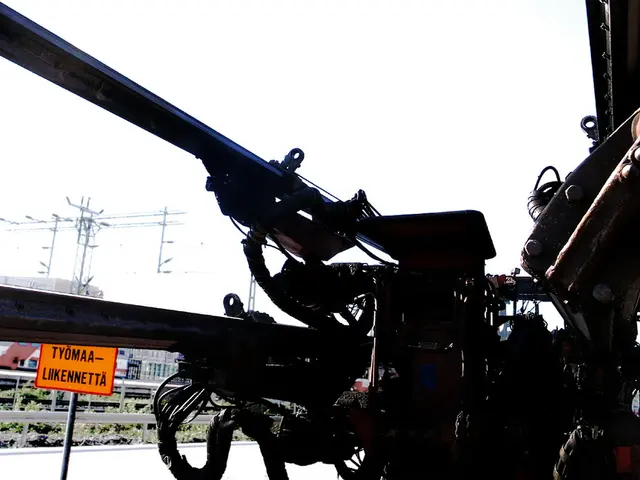Chemical combustion with prolonged duration poses the most significant risk
Unearthing Dangers: The Lingering Menace of Chemical Time-Delay Fuses
Forged in the fires of conflict, these remnants of World War II persist in the earth across cities like Berlin, where the ordnance disposal service grapples with the consequences. Matthias Kotulla, a seasoned police fireworks expert in Berlin, has dedicated his career to defusing bombs and detonating unexploded ordnances (UXOs) that date back to the war. Over the past decade, the team has dealt with an average of two to three deployments per day due to discoveries.
ntv.de: The Mystery of Time-Delay Fuses Unraveled
In an interview with ntv.de, Matthias Kotulla explains the mysteries surrounding time-delay fuses, which are at the heart of the escalating danger posed by UXOs that surface in city communities.
ntv.de: How does the condition of time-delay fuses change over time?
Matthias Kotulla: Time-delay fuses are primarily constructed from materials susceptible to corrosion. The fuse casing, often a thick-walled metallic structure, withstands corrosion better than the sensitive parts like the firing pin and the transfer charge.
How does this manifest in the fuses?
The thin metal components of the fuse, like the firing pin and transfer charge, succumb to corrosion quickly, leaving them vulnerable to mechanical external influences.
What kind of impulse can cause an UXO to detonate prematurely?
External factors, including construction equipment or even removal attempts during defusing, can potentially affect UXOs containing chemical time-delay fuses. A slight impact can be enough to trigger a chain reaction that leads to detonation.
The Brittle Complexity of Chemical Time-Delay Fuses
In a chemical time-delay fuse, the firing pin and its casing are encased in a brittle plastic. Over time, this plastic hardens and becomes brittle, making the fuse more susceptible to fracturing under impact.
The Alarming Rise of Self-Detonations
Statistically, there's one to two self-detonations of bombs with chemical time-delay fuses in Germany each year, emphasizing the escalating danger posed by these UXOs.
The Dangerous Dance with Respect and Fear
A sense of awe and trepidation abounds when defusing UXOs. Fear can instigate reactions one cannot control, making it detrimental to the delicate balance required during defusing. Instead, a healthy respect for the explosive materials fuels cautious handling of each situation. Despite the inherent risks, the team relies on their expertise and experience to handle the danger and ensure success.
Puzzling Treasure of Forgotten Munitions
Only experienced eyes can recognize the remnants of war, such as bombs, grenades, shells, and other ammunition bodies littering the forests, beaches, and city landscapes. While some ammunition is disguised, others bear obvious features that distinguish them as explosives.
Call it luck, persistence, or a keen sense of survival, people continue to uncover these hidden relics of war, reminding the world of the destructive power lurking beneath the surface.
Interview with Matthias Kotulla by Heidi Ulrich
Sources:- ntv.de- UNODA- Deutsche Umwelthilife (2023)
Categories:* Explosive Ordnance DisposalHistoryWorld War IIMilitaryGermanySafetyEnvironmentInnovationPolitics*
- During a recent interview with ntv.de, Matthias Kotulla, a prominent police fireworks expert in Berlin, discussed the mystery of chemical time-delay fuses and their role in escalating the danger posed by unexploded ordnances (UXOs) in city communities.
- Matthias Kotulla explains that time-delay fuses are made from materials susceptible to corrosion, with the thin metal components like the firing pin and transfer charge being particularly vulnerable.
- Over time, the plastic encasing the firing pin and casing hardens and becomes brittle, making the fuse more susceptible to fracturing under impact.
- External factors, such as construction equipment or removal attempts during defusing, can potentially affect UXOs containing chemical time-delay fuses, potentially triggering a premature detonation.
- Statistically, there's one to two self-detonations of bombs with chemical time-delay fuses in Germany each year, highlighting the escalating danger posed by these UXOs.
- In order to handle the danger and ensure success, defusing teams rely on their expertise and experience, all while exhibiting a healthy respect for the explosive materials that can elicit a sense of awe and trepidation.









